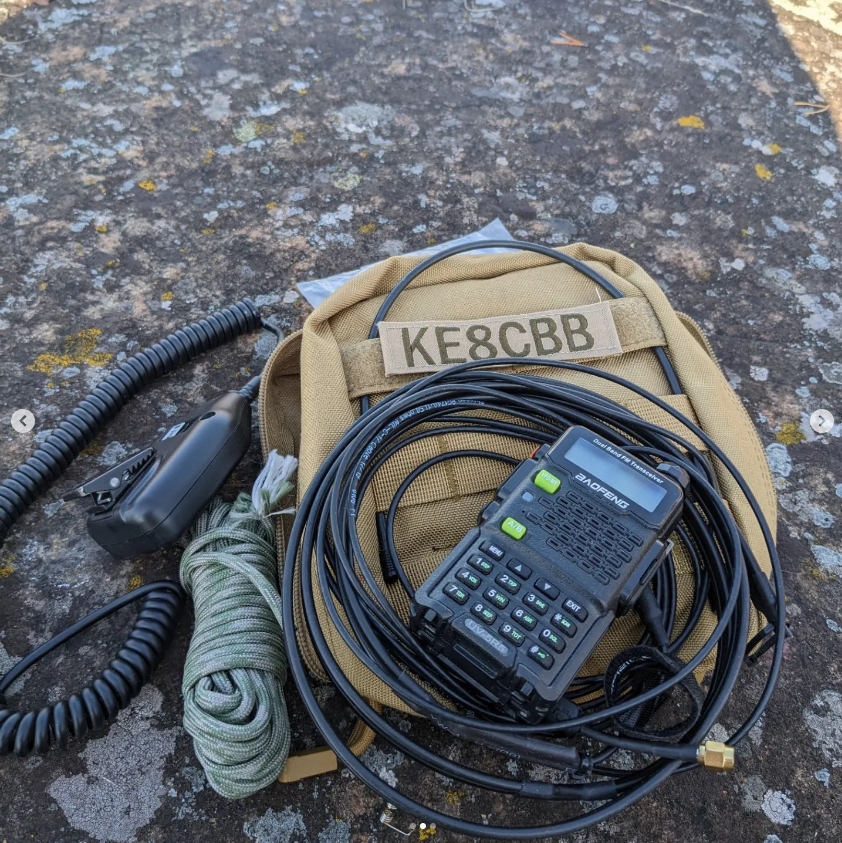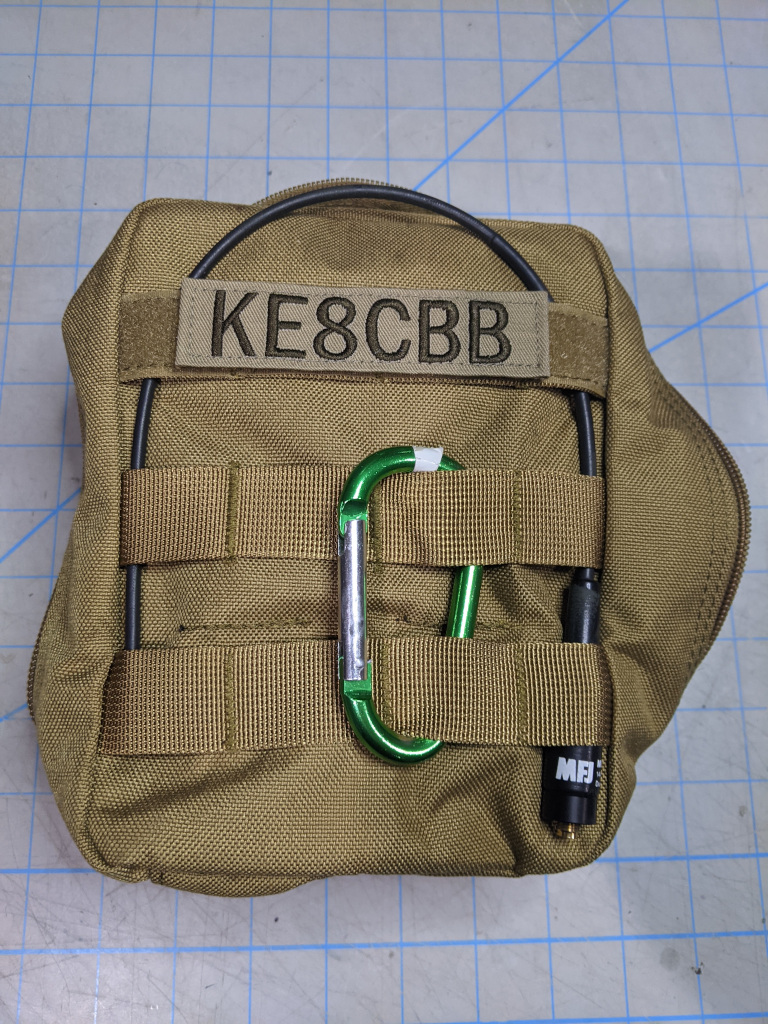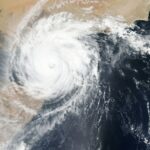I recently was talking with a friend about emergency communications for his prepper group, and he asked about the popular and inexpensive Baofeng UV-5R handheld radios. In his situation, he had members of his group spread out around his area with a maximum distance of about 40 miles between them. Obviously, HT (short for handy-talky) radios aren’t going to be able to cover that distance while operating in simplex, and I told him that the way to go would be to get everyone licensed and just use repeaters. Neither he nor anyone in his group are currently licensed HAM operators, so they don’t really understand the limits of HTs or how repeaters work. All the same, I told him I’d put together a post about my HAM Radio HT Go Bag and point him at some resources to get him and his group legal and operating so that they at least had a chance when it comes to emergency communications within his group.

For the uninitiated, HAM radio is amateur radio communications. To operate on HAM frequencies, one needs to procure an appropriate license from the FCC. Many prepper groups recommend just buying an inexpensive HT like the ubiquitous UV-5R from Baofeng and simply operate unlicensed during an emergency. I strongly advise against that strategy, as unless you understand how to use repeaters and what the limits of your radio are, you’re going to be up a creek when you really need to be able to communicate. Getting licensed has never been easier than now, as you can get study guides for free from sites like hamexam.org and even take your exam online. I got my Technician license five or six years ago and though I use my radios quite frequently, there is still a lot that I don’t know or I’m just learning about.
Before explaining my Go Bag setup, I think it’s important to set up a PACE plan for communications within any group. PACE stands for Primary, Alternate, Contingency, and Emergency, and should be a fairly familiar concept with any preppers.
For my communications PACE plan, I use the following:
- P: Cell Phone – the mobile phone is the most obvious form of direct communication and can be used for either voice or text communication as well as e-mail and other messaging options. This is the ‘situation normal’ option that I and many others use for communications. Obviously, as evidenced by recent events in Nashville, this method can go down.
- A: Telegram – Many people may be familiar with the Telegram app on their mobile devices, but there is also a desktop version of the app. Telegram allows for secure communications over the internet, even when cell towers go down. As long as you have power and the internet is up, you can use Telegram from your wifi connected mobile device or PC.
- C: VHF Ham Radio – VHF radio (HAM radio) is a great tool for communications, though it isn’t secure at all. Using handheld, mobile, or fixed stations, users can communicate over the airwaves with each other and other stations when cell towers and the internet is out. Repeaters obviously increase the range of communication. Linked repeaters can allow for communication over extreme distances assuming the links (internet) is still available. In my group, all users are directed to use a specific local repeater that we all can hit from our locations. Depending on resources and your specific area, you could also set up a repeater station, though in most parts of the United States that won’t be necessary as there are many repeaters that sit unused for 90% of the day.
- E: VHF Ham Radio (simplex) – Repeaters are great but eventually their backup batteries or generators will go down, leaving simplex communication as the final method of comms. In my group, we have specified a specific frequency as our calling frequency, and when all other methods are exhausted that’s what we go to. The range for this is extremely limited, especially when using a HT, but it’s better than nothing at all. If members of your group are able to use more powerful transceivers with better antenna setups, it’s entirely likely that communications using VHF simplex won’t be affected at all in the event of repeaters being unavailable.
Obviously, you’ll want to formulate your PACE plan with your specific needs and capabilities in mind. What works for me may not necessarily work for everyone else! With the PACE plan out of the way, I’ll move on to how I have my EmCom GoBag set up.
First, it bears in mind that if you have a GoBag for your EmCom, you should really have at least a pair of them; one for yourself and another to hand to a partner. Radio communications obviously relies on at least two endpoints, so having two identical setups is ideal. For my setup, I purchased two identical IFAK bags from Amazon that I felt would meet my requirements. Each bag is set up the same way, with the same parts and the same radios. Note that many of the product links I have here are Amazon Affiliate links, so I do receive some compensation if you order them. I never recommend anything I haven’t bought and paid for myself and that I truly don’t believe in.

Note the Nagoya 771 antenna routed through the molle webbing for storage.
Your EmCom GoBag can be any format you like, as long as you can fit everything in it in an organized fashion. Truthfully, these bags are a hair small for my liking, as I really have to work to cram the radio and batteries in. I’m searching for a better bag, ideally one with a little padding, and I’m sure I’ll do a new post or update this one when I find it.

From the photo it’s pretty easy to see that I’m packing quite a bit of gear into that little bag. From left to right, I’ll list the contents:
- Digital mode cable (for APRS, which will be covered in another post. If you’re not using APRS, feel free to omit this)
- Paracord (~50ft for hoisting your j-pole)
- UV-5R radio or similar and standard battery (inside the pocket behind the paracord)
- PACE and comm plan laminated card (inside the pocket behind the paracord)
- Small waterproof bag with DC charge adapter, and cables for the LiPO battery
- Rubber ducky antenna
- 26000mAh LiPO battery bank
- Extended battery for the radio
- Roll-up j-pole antenna
- Nagoya 771 Antenna (on the front of the pouch)
It’s optional but recommended that you also have a throw-bag of some sort to throw your paracord over something like a tree branch for hoisting your antenna. They’re relatively cheap and better than a rock or a stick. Shoot for maybe a 5oz one. If I had the space, I’d also include a decent hand mic for the radio, as some radios (especially many Baofeng types) have very poor internal mics and speakers, and can be sensitive to interference by being too close to your body.
So, that’s my EmCom GoBag. What does your system look like? Are there any changes you’d suggest for mine? Let me know down in the comments!






